The oil is extracted from the ripe fruits of wild roses. This substance has a bitter taste and a peculiar odor. The shade depends on the type of plant and the area where it grew, so the oil can be brownish, pinkish, golden or orange in color. Contains:
polyunsaturated fatty acids (over 15 types), which are responsible for cell hydration and protection from external influences;
complex of vitamins A, E, C. They are responsible for restoration, rejuvenation and nutrition of tissues;
a set of important elements for normalizing metabolic processes inside cells.
Benefits for the body
With constant consumption of oil, cholesterol decreases. This is an excellent prevention of heart and vascular diseases. It will be useful for atherosclerosis, as it helps strengthen the walls of blood vessels.
In addition, it is known that rose hips contain more vitamin C than citrus fruits, which is why it is an excellent remedy for boosting immunity.
Rosehip oil for face. Properties
The oil contains many vitamins and minerals. Thanks to this, rosehip oil has a large list of beneficial properties for the face. It can provide nutrition, moisturize the skin, improve cell metabolism, and remove toxins. With regular use, you can achieve beautiful and healthy skin.
It is indispensable in the care of mature skin, as it not only slows down aging, but can also remove fine wrinkles. With constant use, the tone of the skin increases, the complexion evens out, and pigmentation decreases. In addition, the oil relieves fatigue and irritation and softens the skin.
The oil's metabolic properties help improve the healing of skin damage. You just need to regularly apply a few drops to abrasions or burns. Reduces scar marks, scars. It is used as a compress for the prevention of dermatitis, psoriasis, and allergic reactions.
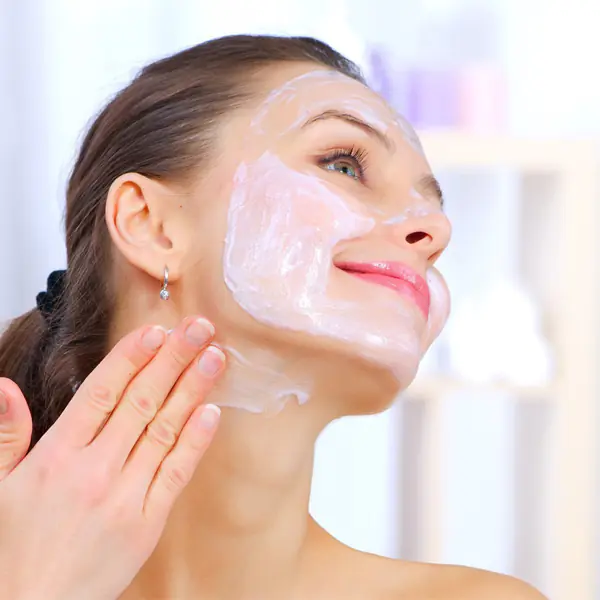
The best effect is achieved when used for dry skin types prone to flaking, but not recommended for mixed and oily skin types.
Used instead of cream due to its excellent moisturizing properties. It is enough to rub a small amount into clean skin and massage it a little.
Rosehip oil for face. Contraindications
Any natural component, regardless of its beneficial properties, has contraindications. Rosehip oil for the face is contraindicated for those with problematic skin prone to oiliness and boils. It is worth taking into account individual intolerance.
Face masks with rosehip oil
It is worth noting that face masks with rosehip oil should only be used on steamed, clean skin, and the compositions should be applied along massage lines. So, miraculous recipes:
to create a mask that nourishes the skin, you will need to beat 2 yolks with half a spoon of oil and leave on the skin for 10 minutes. Removed with warm water;
To cleanse the skin and supply useful vitamins, the following composition is suitable: 2 tbsp. rolled oats are brewed with milk. Leave until it swells. Now add 1 tsp. oils Keep on skin for 15 minutes;
Rosehip oil also fights inflammation and swelling: 1 tbsp. wheat bran is added 1 tbsp. nettle infusion and half a spoon of oil. Apply to the skin for a quarter of an hour;
To improve elasticity, the following mask is suitable: 1 tsp. beat honey with raw yolk, add 1 tsp. oils Leave on face for 15 minutes.
To quickly heal wounds or get rid of skin diseases, soak gauze and leave the compress on the affected area for half an hour; this must be repeated several times a day. In addition, rosehip oil is suitable for massaging the face, as a base for creating homemade cream.
The oil is added to lotions, cleansers, as well as to any skin masks, 1 tsp. By the way, this is a wonderful way to combat chapped lips. It is enough to apply a little oil on dry lips instead of hygienic balm.
Rosehip oil for wrinkles
As mentioned earlier, rosehip oil is an effective anti-wrinkle remedy and a huge help in the fight against skin aging:
to achieve the rejuvenation effect, use the following mask: mix 1 tbsp. rosehip oil and wheat germ oil, 2 drops each of pelargonium and patchouli oils. Apply for 15 minutes. Can be used instead of night cream;
to prepare a composition with a large amount of vitamins you will need: 40 g of baby cream, 1 tsp. aloe vera juice, 20 drops of olive oil and 10 drops of rosehip oil and vitamin B2. The mixture is poured into a jar and stored refrigerated. Apply to skin before bed.
In addition, apply instead of daily cream, or add a couple of drops to the one you are using. It is best to apply with patting movements, which will improve blood flow and increase the beneficial effect.
Can rosehip oil be used for acne?
Based on the results of research by scientists, it became known that using rosehip oil for acne is not beneficial. Experts even claim that it can only worsen the condition of problematic skin and increase the number of certain rashes.
Scientists say that rosehip oil is oversaturated with fatty acids, more fatty than other cosmetic oils. This causes clogged pores, which increases the chances of infections growing.
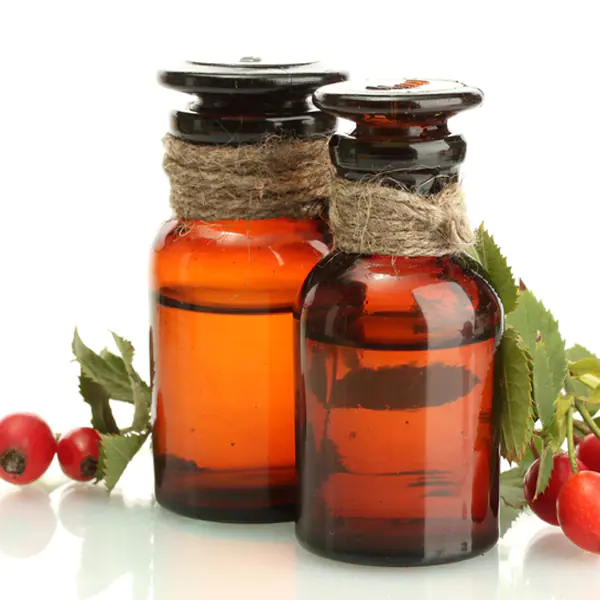
To get rid of acne, it is only suitable for those with very dry skin types. In addition, the oil contains retinoic acid, which is suitable for certain types of acne. Although the use of rosehip oil to get rid of acne is not recommended, it is claimed that it can help with post-acne and acne scars. Fatty acids will reduce the size of these imperfections and even out the color.
To eliminate scar marks, just apply a few drops to the problem area. The result of use will become noticeable after 12 weeks.
Before using oil to get rid of scars and acne, consult a doctor. It should not be combined with prescription medications.
Rosehip oil at home
To create rosehip oil at home, you will need the seeds of this plant. They need to fill the jar 1/3 of the way, and then add olive oil to the top. The mixture is sent to a cool place, protected from light for 25 days. After this, the composition is filtered and poured into a clean bottle. That's it - the oil is ready for use. It is added to masks, creams, used as a compress or consumed internally.
Having discovered timid wrinkles on our face one fine morning, we fall into a panic and estimate with horror how much a visit to a cosmetologist will cost. Meanwhile, products from the “natural first aid kit” may well rejuvenate and refresh your facial skin and get rid of pigmentation, dryness and sagging. For example, rosehip oil has been used for the face since time immemorial. What is the value of this product? For which skin is it suitable and which is contraindicated? How to make cosmetic masks based on it yourself?
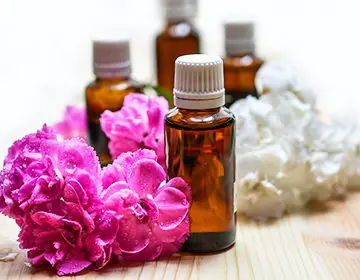
This substance is produced from wild rose berries. It’s not for nothing that rosehip oil is popularly called “liquid sun.” It has a characteristic orange-red color and, like a natural luminary, exudes healing properties. And here is its cosmetological feature: unlike many other oils, rosehip oil is ideal for caring for the delicate skin around the eyes.
Beneficial effect on the body
The main wealth of rose hips is the fatty acids in its composition (oleic, stearic, palmitic), as well as vitamins E, A, C, F. In addition, it contains phospholipids, antioxidants, micro- and macroelements (iron, phosphorus, copper, calcium , magnesium and others).
Thanks to its rich “inner world,” rosehip has a beneficial effect on the body: it stimulates the immune system, has a general strengthening effect, tones blood vessels, helps in the fight against depression, and has excellent antimicrobial and regenerative properties. In addition, its beneficial properties include improving liver function, normalizing cellular metabolism and rejuvenating the body.

For freshness and velvet complexion
Even medieval Italian beauties washed themselves with a decoction of wild rose petals to appear younger. And what properties of rosehip oil for the face are most valued by modern fashionistas? Each substance in its composition contributes to creating the image of rosehip as a “super remedy”.
- Vitamin C . Natural enemy of premature aging. Its benefits are invaluable, since it is responsible for the production of collagen in the body, a guarantor of facial skin elasticity.
- Vitamin A . Lightens the skin, helps in the fight against age spots.
- Vitamin E. Moisturizes dry skin, has a soothing and anti-inflammatory effect.
- Beta-carotene. Prevents damage from free radicals, thereby fighting back against premature aging.
- Lycopene. Serves as a natural skin protector from ultraviolet rays and has a rejuvenating effect.
- Fatty acid . Smooth out wrinkles, “mask” scars and scars, and prevent moisture from leaving cells.
- Macro- and microelements. Nourishes the skin, activates intracellular metabolism.
Rosehip oil for the face is especially effective in the fight against wrinkles - this is evidenced by numerous reviews on women's forums. The product is easy to apply, absorbs evenly and quickly without shine. The easiest way is to mix a little oil into your regular cream or tonic. You can also rub it in as an independent remedy.
For lush eyelashes and rosy lips
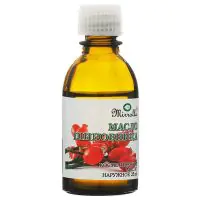
This natural “elixir of youth” also cares for eyelashes. Strengthens them, promotes growth and increases elasticity. Pour the oil into an empty mascara tube (ideally combine it with sea buckthorn or burdock in equal proportions) and apply daily for a month. In addition, the product is also suitable for caring for the skin around the eyes. It can also easily replace your usual store-bought lip balm.
To make wounds heal faster
Wild rose oil is an excellent healing agent, treats microcracks and dermatoses.
The procedure is simple. You need to soak a piece of gauze in the rosehip “juice”. And then -
Apply the compress to the damaged area of skin for 15 minutes. In order for the wound to heal faster, it is recommended to repeat the procedure three times a day.
Rosehip oil for the face: who is it suitable for, and for whom is it taboo?
This product, like any cosmetic product, should be applied with caution. This natural anti-aging extract is not suitable for everyone. Indications for use: dry, tight skin, prone to early aging, as well as age over 40 years.
Those with mixed skin types can also use the product, but without fanaticism: it can only be used on the cheeks and areas around the lips.
Homemade masks and creams: recipe
It’s not difficult to make face masks from rosehip oil at home. We offer options for popular and effective mixtures, which, judging by reviews on the Internet, have been tried and appreciated by many representatives of the fair sex.

From baby cream - anti-aging
- Mix ten drops of “liquid sun” with two tablespoons of any baby cream.
- Squeeze and pour aloe juice - a teaspoon.
- Add jojoba oil and vitamin B2 - five drops each.
- The resulting mixture should be transferred to a glass container and refrigerated.
- Use instead of the usual cream once a day.
- The mixture is usable for no more than a week, then you need to prepare it again.
Yolk option
- Mix the egg yolk and half a teaspoon of wild rose oil.
- Apply the mask in a thick layer.
- Leave for ten minutes.
- Rinse your face with warm water.

Impact mixture for “cobwebs” under the eyes
- Add companions to three teaspoons of rosehip oil: a teaspoon each of jojoba oil, honey and aloe juice.
- Add vitamins E and A - two drops each.
- Apply under eyes every day.
- The course is two weeks. Afterwards you can use the product less often. About once a week for a preventive effect.
Honey-sun nutritional cocktail
- Recipe: take a teaspoon of honey and the same amount of “liquid sun”.
- Add two quail yolks.
- Mix the ingredients and apply to the skin. There will be nothing wrong if you also treat the areas around the eyes.
- After 15 minutes, wash your face.
To avoid bags under the eyes
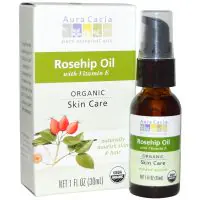
Take one tablespoon of any base oil (coconut, orange, almond) and a tablespoon of “liquid sun”.- Add some lavender and tea tree oils to the main ingredients. Each - three drops.
- Mix all ingredients in one sealable container. This can be a small bottle with a lid, which will allow you to gently shake the resulting cosmetic “bouquet”.
- In the evenings, apply two to three drops, gently massaging the skin.
Anti-edema
- You will need a tablespoon of wheat bran, the same amount of nettle infusion and a teaspoon of “liquid sun”.
- Connect the components.
- Leave the mask on for 15 minutes. Then wash your face.
Storage features and allergy test
Rosehip oil is a “living” product, so it is recommended to store it at a temperature no higher than 20°C. Empty an open bottle within three months.
Rose hips can cause allergies if you suddenly have an intolerance to the components of the product. Therefore, be sure to start using rosehip oil on your face with a test. For example, try the oil on the skin of your wrist. If, after 24 hours, changes occur in this area of the dermis, stop using the product.
Rosehip oil is obtained from the flowers and fruits (seeds) of the wild rose (popularly called rosehip). A balanced composition, enriched with vitamins, fatty acids and microelements, provides the healing properties of rosehip oil, which are used in medicine. In the field of cosmetology today, this product is used to moisturize and rejuvenate facial skin.
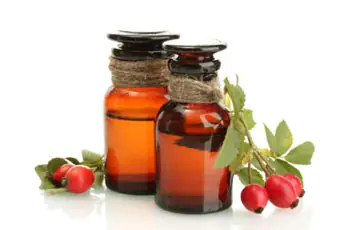
Properties and benefits of rosehip oil for the face.
Externally, rosehip oil is a yellow-red, bitterish liquid with a characteristic aroma. Due to its complex composition, the oil has the unique property of penetrating deep into cells, thereby ensuring their full functioning. The product has a highly nutritious, moisturizing (due to the property of retaining moisture), regenerating, restoring effects on the cells and tissues of the epidermis, improving intracellular metabolism. Thanks to the fatty acids present in it, the oil effectively protects the skin from external influences.
Rosehip oil should be used only for its intended purpose, because it is not suitable for all skin types; in particular, it is undesirable to use it for oily and problematic skin, as this may aggravate the problem. In care, it is used to moisturize excessively dry skin, to eliminate tightness, flaking, and age spots. It successfully copes with bruises and bags under the eyes, perfectly eliminates wrinkles around the eyes, smoothing them out, improves complexion, and is used in the treatment of burns. It brings invaluable benefits to mature and aging skin, increasing its firmness and elasticity, providing a pronounced lifting effect and rejuvenating effect. Rosehip oil can eliminate scars and scars, as well as acne spots (post-acne).
Sometimes oil can provoke allergic reactions in the presence of individual intolerance. Before using it directly, it is advisable to test it on a small area of skin.
Ways to use rosehip oil for the face.
Cosmetic rosehip oil is freely sold in any pharmacy. In home cosmetology it can be used undiluted as a cleansing wipe. Just moisten the cosmetic disc in hot water, add a couple of drops of rosehip oil and wipe your face along the lines of less stretching of the skin. It is better to do the procedure in the evening, since the oil is absorbed for a long time, this can affect the process of applying morning makeup (increase the period of time), which is unacceptable if you work. The oil can be used as a night nourishing cream, apply a small amount with “driving” movements, leave for fifteen minutes, then blot the skin with a cosmetic napkin. It is effective to enrich cosmetic products (creams, masks, lotions, etc.) that you use daily with rosehip oil; take no more than a couple of drops of oil per application. Pure oil can also be used to lubricate flaky spots, soften rough skin on elbows, knees and heels, treat wounds, cracked lips and catches in the corners of the mouth, and use as a protective agent in bad weather.
For the treatment of wounds and microcracks, dermatoses, trophic ulcers, etc. Applications with rosehip oil are good, moisten a gauze cloth in it and apply to the damaged area for fifteen minutes. Carry out this procedure three times a day.
Rosehip oil serves as an excellent base for dissolving essential oils to create therapeutic nourishing masks for facial skin care. For these purposes, it is best to use essential oils of neroli, chamomile, orange, patchouli, lavender, rose, bergamot, ylang-ylang.
Due to its high regenerative ability, doctors recommend using rosehip oil in the treatment of burns, stretch marks, scars (including post-acne), because it not only speeds up the healing process, but also prevents the formation of keloid scars. Pure oil should be lubricated with massaging movements on problem areas several times a day. The visible effect will occur within a month, significant improvement - after 3-6 months.
To combat wrinkles, the oil should be applied undiluted to the area of wrinkles (around the eyes, mouth); similar spot application can also be used for those with oily skin.
Rosehip oil for the face is ideal for caring for eyelashes, strengthening them, making them more elastic and thicker. Every day for a month, apply undiluted oil, or in combination with burdock or sea buckthorn (in equal proportions), using a special brush on the eyelashes.
It is good to massage your face with oil, which is important for very dry skin. First moisten your fingers in warm water, then in oil and gently massage it into the skin for fifteen minutes. After this, blot off the remaining product with a paper napkin.
Oil also finds its use in caring for the delicate and thin area around the eyes; add three drops of vitamins E and A in oil to a tablespoon. Apply overnight.
Recipes for face masks with rosehip oil.
I would like to note right away that any facial procedures must be carried out on previously prepared, that is, steamed and cleansed skin. Masks should be applied strictly along massage lines: from the center of the forehead to the temples, from the chin to the temples, from the upper lip to the ears, from the nose to the temples.
Here is the recipe for a nourishing mask: beat two egg yolks, add a teaspoon of rosehip oil to the resulting mixture. Apply for ten minutes, rinse with warm water.
The following recipe perfectly nourishes and cleanses the skin: brew two tablespoons of rolled oatmeal flakes, crushed in advance, with milk and let them swell. Add a teaspoon of rosehip oil to the resulting mass while warm. Keep the mixture on your face for fifteen minutes.
Here's an anti-aging remedy with a rejuvenating effect: combine one tablespoon each of rosehip and wheat germ oils, add two drops each of patchouli and geranium essential oils. Leave the mixture for fifteen minutes. Can be used as a nourishing night cream.
This mask copes well with swelling and inflammation: add the same amount of nettle infusion to a tablespoon of wheat bran (a tablespoon per 200 ml of boiling water, leave for twenty minutes) and a teaspoon of rosehip oil. Leave the mask on for fifteen minutes.
To improve skin elasticity, the following recipe is recommended: beat a teaspoon of liquid honey with a raw egg yolk, add a teaspoon of rosehip oil. Apply the mask for fifteen minutes.
Vitamin cocktail for aging skin.
Baby cream, just take 40 g, dilute with a teaspoon of aloe juice, add ten drops of vitamin B2, twenty drops of olive oil and ten drops of rosehip oil. Transfer the finished product into a clean jar and store in the refrigerator. Use on face at night.
Making “rosehip oil” at home.
Place rosehip petals (seeds) into a liter jar, the jar should be one third full, add olive oil. Keep the mixture in a dark and cool place for twenty-five days, then strain and pour into a bottle.
Contraindications for external use.
- Individual intolerance.
- Dermatic, allergic, acne rash.
- Furunculosis.



